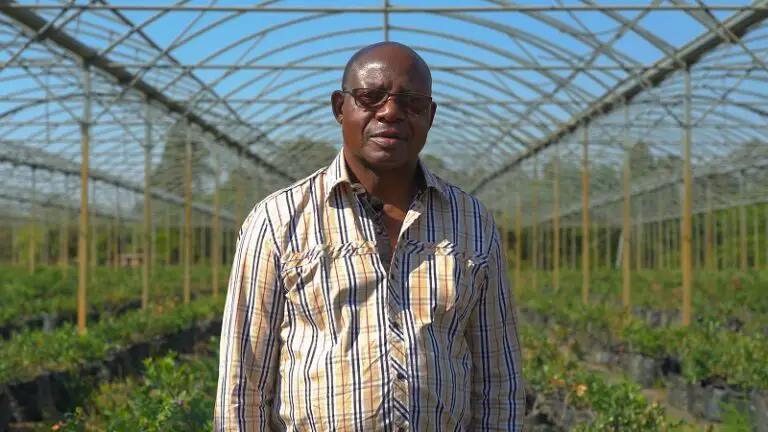- Kenya’s economy posts 5.6 per cent GDP growth in 2023
- The Crucial Role of Private Capital Africa’s Economic Development
- Kenya’s Marine Potential: Fostering Sustainable Blue Economy
- American nationals arrested in foiled attempt to overthrow President Tshisekedi
- The role of financial services in achieving financial inclusion in Rwanda and beyond
- AIM Global Foundation wraps up its engaging participation at Russia’s Kazan Forum
- Will Tanzania’s new truck assembly plant revive old coal mines?
- Communications Authority of Kenya needs $820M for digital superhighway goals
Browsing: premium
- Edwin Moyo, Zimbabwe’s horticulture industry magnate flies under the radar. He is unlike your typical successful Harare businessman. He is not bashful about his wealth or his influence and yet he is very influential.
- The entrepreneur made his mark in a number of ventures most notably horticulture. His success culminated in his operations at a farm in Zimbabwe’s eastern highlands called Kondozi.
- At its peak, Edwin Moyo’s Kondozi horticulture venture employed as many as 15,000 people and supported the local economy of Mutare.
- Kondozi exported fresh produce as far as Europe and Edwin Moyo managed to secure long term supply contracts with leading United Kingdom retailers like Tesco.
- Edwin Moyo’s experience in Zimbabwe is very telling of the culture of that country to persecute and to hound its most successful businesspeople and entrepreneurs.
- Kondozi is one of the farms that was forcibly taken over by the government under the guise
In full throttle the world is diving deeper into the Fourth Industrial Revolution (4IR). Resultantly, among the new wave of technologies marking this new era is the adoption of digital currencies such as a CBDC. This relatively nascent era of economic disruption has birthed a need for digital currencies and we might very well be in the twilight years of using the traditional fiat currency. In his book, “The Future of Money: How the Digital Revolution is Transforming Currencies and Finance” economist Eswar Prasad, predicts that the era of cash is drawing to an end and that of central bank digital currencies and other forms of digital cash has begun. Indeed the future of money is evolving and already several countries across the globe are particularly piloting the Central Bank Digital Currencies (CBDCs).
In Africa, albeit slow, the concept of CBDC’s adoption is gaining momentum with several nations in the …
Most African economies have been staring into an economic abyss, besieged by a plethora of daunting challenges that have left many teetering on the edge of a precipice. A glance into Africa’s economic crystal ball for 2023 depicts a mixed bag of fortunes, with some economies set to flourish like a green bay tree, some will find themselves staring down the barrel of a recession whilst others will remain in the doldrums.
According to the International Monetary Fund (IMF), economic growth in Sub-Saharan Africa is expected to reach 3.7 percent in 2023. Slowing global growth, higher external borrowing costs and weaker domestic currencies, are now the dominant factors weighing on Africa’s economies next year. In reiteration, the Economist Intelligence Unit (EIU) predicts that African economies will face turbulent times in 2023, as a range of internal and external shocks undermine growth prospects and threaten stability, but most of countries will …
But what is expected of
According to the Central Bank of West African States (BCEAO), growth should accelerate in the WAEMU economic region in the medium term. The increased production in the tertiary and secondary sectors remains crucial. These sectors should benefit from controlling the current health crisis in the Union and the continued implementation of the NDPs.
Growth in the Union is expected to drop from 6 per cent in 2021 to 5.9 per cent in 2022 before settling at 7.2 per cent in 2023. The contribution to growth from the tertiary sector should stand at 3.5 per cent in 2023, up by 0.3 points compared to 2022. The contribution of the secondary sector should grow by 0.9 points between the two years to settle at 2.6 per cent in 2023.…
- Africa is host to some world class companies that investors should consider adding to their portfolio in 2023. However, the investment climate has been choppy at best and investors need to be shrewd when it comes to their portfolio investment decisions especially in 2023.
- The investment climate was at the beginning of the year quite optimistic with the world finally putting COVID and its pandemic behind it. Investing in African companies would have been in a no-brainer given the circumstances around the world at this time.
- Things started to go side ways when Russia invaded the Ukraine and set in motion a chain of events which have profoundly altered the global investment climate and flow if investment capital which would otherwise be directed to the top African companies.
- The United States dollar was resurgent in 2022 nearing parity with the Euro and the Pound Sterling as the cost of living
The low adoption of CBDCs in Africa, which would hinder the policy objectives central banks hope to achieve, remains a significant concern for African central banks.
- 90 per cent of central banks were involved in CBDC analysis or projects in 2021. The percentage of central banks undertaking pilot projects reached 26 per cent
- Access to digital cash as an alternative payment mode is a critical factor driving the adoption of CBDCs in Africa.
- Providing access to those without internet or smartphones is a significant challenge for adopting CBDCs in Africa.
What is a CBDC
A central bank digital currency (CBDC) is a digital currency valued in the national unit of account that serves as a central bank liability. Initially, central banks globally were cautious about CBDCs, but their interest has grown recently. According to a recent Bank of International Settlements (BIS) poll, 90 per cent of central banks were involved …
